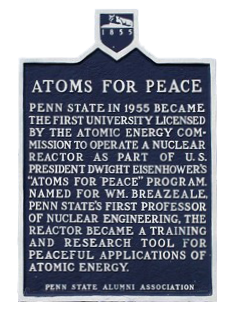
History of the Penn State Breazeale Nuclear Reactor
Penn State was one of the first universities to take advantage of the Atoms for Peace program in the 1950s. Eric A. Walker, then the dean of engineering and architecture, proposed that the university construct a reactor for research and education purposes. The university’s president, Milton Eisenhower (the brother of U.S. President Dwight D. Eisenhower) enthusiastically supported and encouraged this endeavor.
In early 1953, the university’s board of trustees authorized the project, and two prominent nuclear engineers, William M. Breazeale and Robert G. Cochran, left Oak Ridge National Laboratory to design the reactor. Construction began in 1954 and involved faculty and staff from the Departments of Architectural Engineering and Civil Engineering, as well as supervision by Breazeale, who became Penn State’s first Professor of Nuclear Engineering, as well as the first person to receive a reactor operator’s license from the U.S. Atomic Energy Commission (AEC).
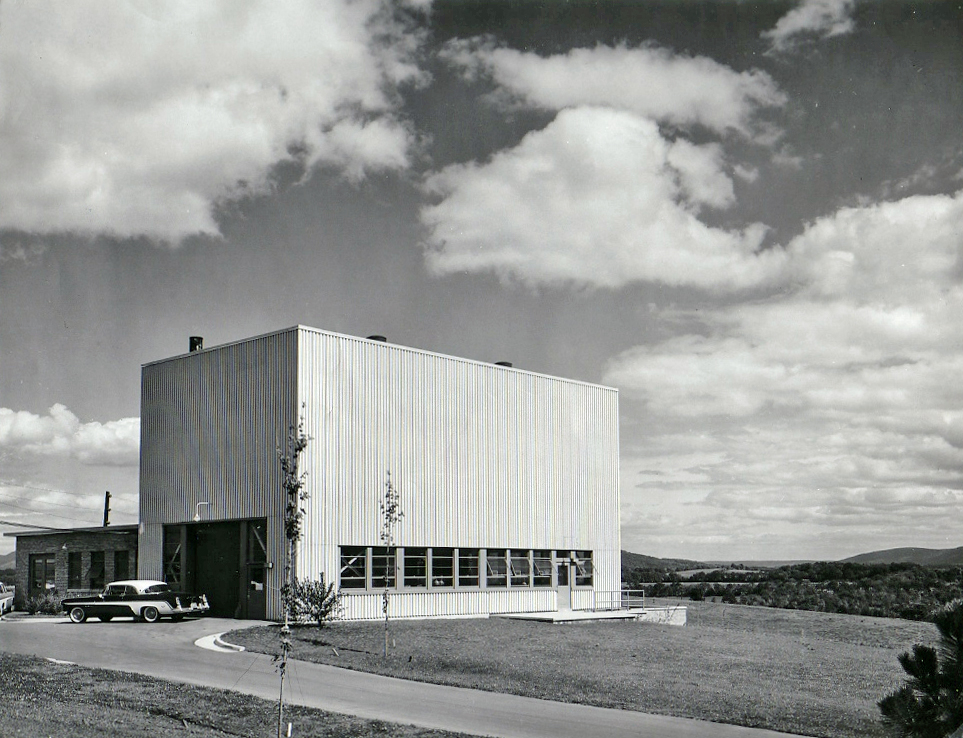
The reactor was dedicated on February 22, 1955, although the uranium fuel was not available until July because the AEC had not yet established procedures for its distribution and monitoring. Following an intervention on Penn State’s behalf from President Dwight Eisenhower, Penn State received the fuel and was issued AEC license number R-2 on July 8, 1955, and became the first American university reactor to reach criticality on August 15, 1955 (AEC license R-1 had been reserved for a small reactor at North Carolina State College, which was not licensed until October of 1955).

The Penn State reactor’s initial design was that of a Materials Testing Reactor (MTR), which used plate-type fuel suspended mounted on a grid plate and suspended from a moveable bridge in the reactor’s open pool. This reactor design was initially licensed for a power level 100 kWth, and was later upgraded to 200 kWth in 1960. Research at this time focused on nuclear theory applications and the characterization of the half-lives and radioactive emissions from radioactive isotopes.
The Penn State reactor also became a hub for teaching nuclear concepts. In 1956, Penn State was one of only two universities where the International School of Nuclear Science and Engineering was established to educate scientists and engineers from foreign countries. A total of 175 scientists and engineers from 39 countries participated in one of six programs that were conducted at Penn State from April 1956 to January 1959. The facility also conducted training programs for commercial reactor operators in the United States. In the late 1950s, it was estimated that approximately one-third of all commercial nuclear reactor power operators in the U. S. received training at the PSBR, and the training continued until the advent of nuclear power plant simulators in the early 1980s.
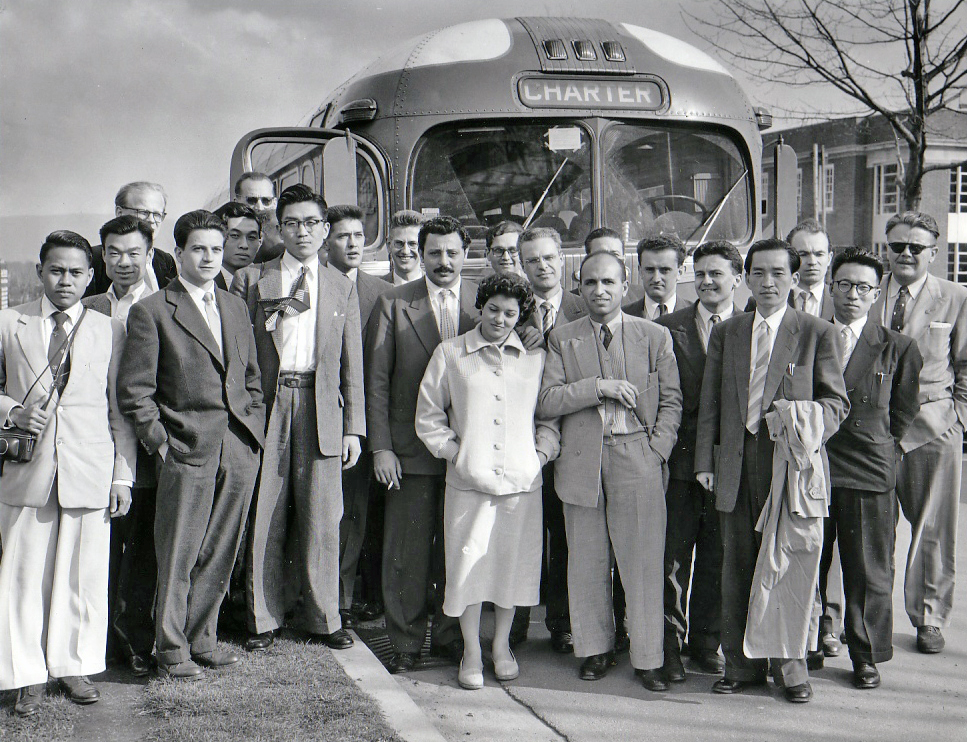
Penn State received a license amendment in 1965 that allowed for the conversion of the reactor from the highly enriched MTR fuel to a TRIGA (Training, Research, Isotopes, General Atomics) design, which required low-enriched uranium and provided a higher steady-state power of 1 MWt and the capability to pulse the reactor up to 2000 MWt. Penn State was not the first university to install a TRIGA, but it was the first to convert an existing reactor from the high-enriched MTR core to the lower-enriched uranium TRIGA core.
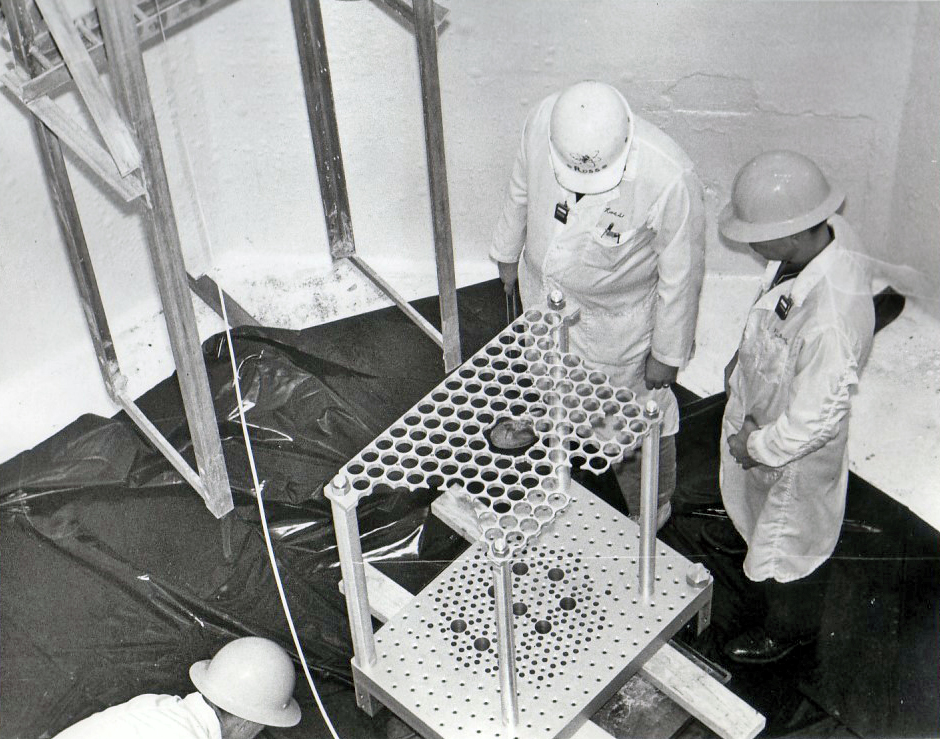
The 1960s also saw an expansion of the reactor facilities and a broadening of the areas of nuclear research. A large research wing, with laboratory and classroom spaces, was added to the west end of the reactor building. On the east side of the reactor, two heavily shielded laboratory hot cells, where highly radioactive samples can be safely handled, and a pool for radioactive sources, providing intense gamma-ray sources for experimenters, were added. Research using the reactor expanded to include investigators in anthropology, biology, chemistry, dairy science, food science, geoscience, nuclear engineering, and physics, many of them using neutron activation analysis. Research, teaching, and training demands became so high that the reactor began operating two shifts.
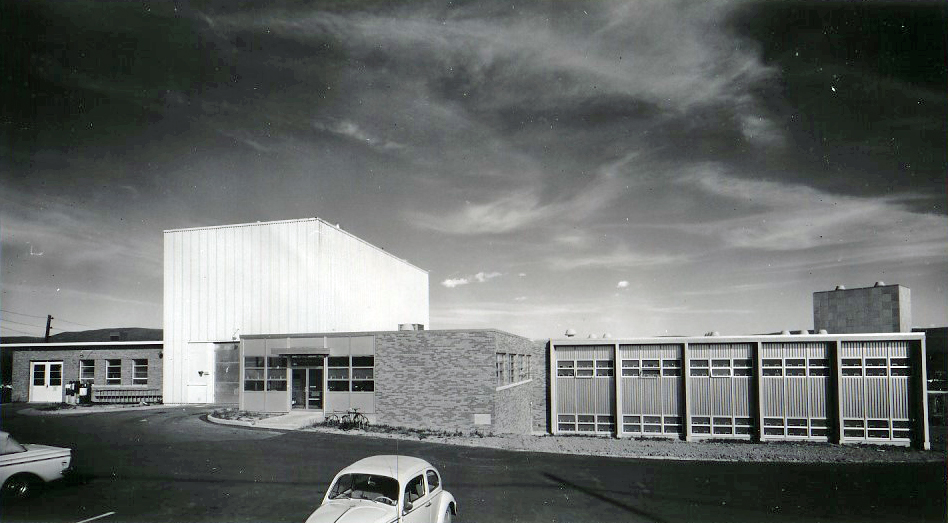
In 1971, the reactor was renamed the Penn State Breazeale Reactor (PSBR) to honor Professor Breazeale, the reactor’s first director and its first licensed operator, who had died in 1970. The 1970s also brought a number of research areas that were of great service to the Commonwealth of Pennsylvania. PSBR staff supported work at the Harrisburg Hospital to develop a bone scanning technique using fluorine-18. Penn State faculty pioneered the use of activatable tracers for environmental investigation and biological systems research. The EPA approached Penn State to start a laboratory for the radiological analysis of drinking water, spurring the creation of the Low Level Radiation Monitoring Laboratory, which was licensed by the EPA in 1981. PSBR staff also assisted in the state response to the Three Mile Island (TMI-2) nuclear reactor accident, answering questions about the accident and its effects, as well as assisting the Citizen’s Monitoring Program, which independently monitored the area for increased radiation levels.
In the 1980s, the PSBR staff developed special training and experiments for operators who would be conducting the defueling procedure at the post-accident Three Mile Island-2 reactor. Industrial customers contracted for the production of radioactive tracers to be used to measure and improve their manufacturing processes. In 1984, the PSBR added real-time neutron radiography capabilities, allowing researchers to study the internal operations of opaque systems not visible to X-rays or gamma-rays. In 1986, the Nuclear Regulatory Commission (the successor to the AEC) granted the PSBR a 20-year operating license extension.
In 1990, Penn State established the Radiation Science and Engineering Center (RSEC), a university-wide facility to promote research, education, and varied applications of radiation science and nuclear engineering. The RSEC comprises the PSBR, gamma irradiation facilities (in-pool irradiator, dry irradiator, and hot cells), the Radionuclear Applications Laboratory, and various radiation detection and measurement labs.
The RSEC was one of the first university reactor facilities to install a digital control and monitoring system. The PSBR completed the installation, testing, and licensing of a new reactor instrumentation and control system in 1991. Sponsored by the Philadelphia Electric Company, the U. S. Department of Energy, and the Commonwealth of Pennsylvania, the control system manufactured by AECL Technologies brought the PSBR up to date with state of the art digital technology. The PSBR designated as a Nuclear Historic Landmark by the American Nuclear Society in 1992.
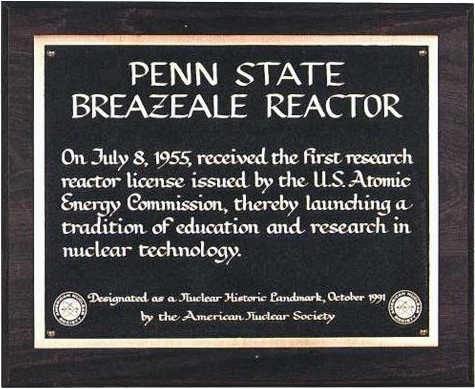
The reactor was originally attached to the middle of a bridge-like structure spanning the pool, with the bridge moving on rails along the length of the pool. In the mid-1990s, the bridge structure was redesigned to add lateral and rotational movement to the reactor core, which allows it to be positioned almost anywhere in the pool. To the best of the knowledge of the center’s faculty, this capability makes the reactor unique in the world.
Penn State submitted another reactor license renewal application to the NRC in December 2005. After the agency’s initial review, the NRC made several requests for additional information. Once the university supplied the additional information and the NRC was satisfied with the responses to its questions, a 20-year license renewal was granted in November of 2009, extending the license to 2029. According to the NRC’s license-renewal report on the reactor, the facility poses “no significant radiological risk to the health and safety of the public, facility personnel, or the environment.” The report also concluded that the reactor has adequate funding and qualified personnel to continue operation for the next 20 years.
Current infrastructure, teaching, and research projects continue to build on these historical foundations. A full renovation of our existing facilities is nearly complete, and there are plans for the expansion of the existing neutron beam laboratory in the near future and a new core-moderator and beam port arrangement that are under way. Two new teaching initiatives have introduced important, emerging areas of nuclear engineering to students. The RSEC, along with MIT and Texas A&M, formed a Nuclear Security Education Program that is sponsored by the National Nuclear Security Administration. This program educates students in the technical and policy issues surrounding the monitoring and security of nuclear materials in the modern era. Additionally, the RSEC added a radiochemistry teaching laboratory, allowing undergraduate and graduate students to obtain hands on experience with important radiochemical techniques. Our current research areas include numerous projects using specialized neutron techniques, as well as medical isotope production, neutron activation analysis, and gamma-ray irradiations. The research envisioned for the center’s new beam port/beam hall design will be primarily in cutting-edge nuclear science and materials science.
